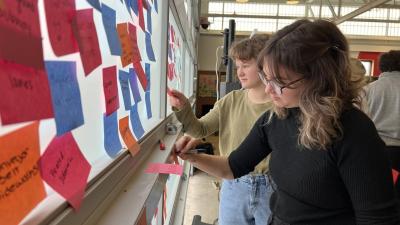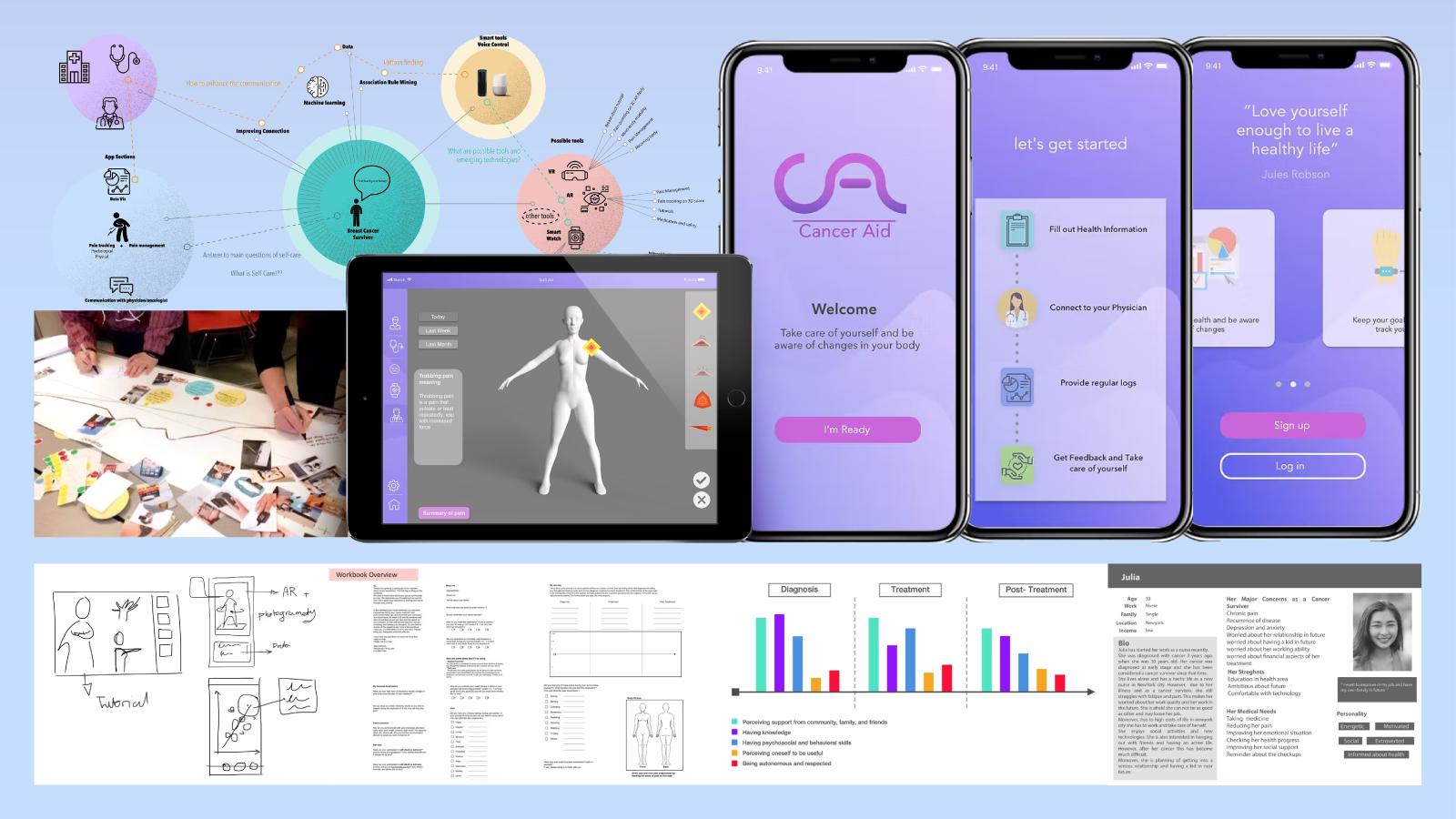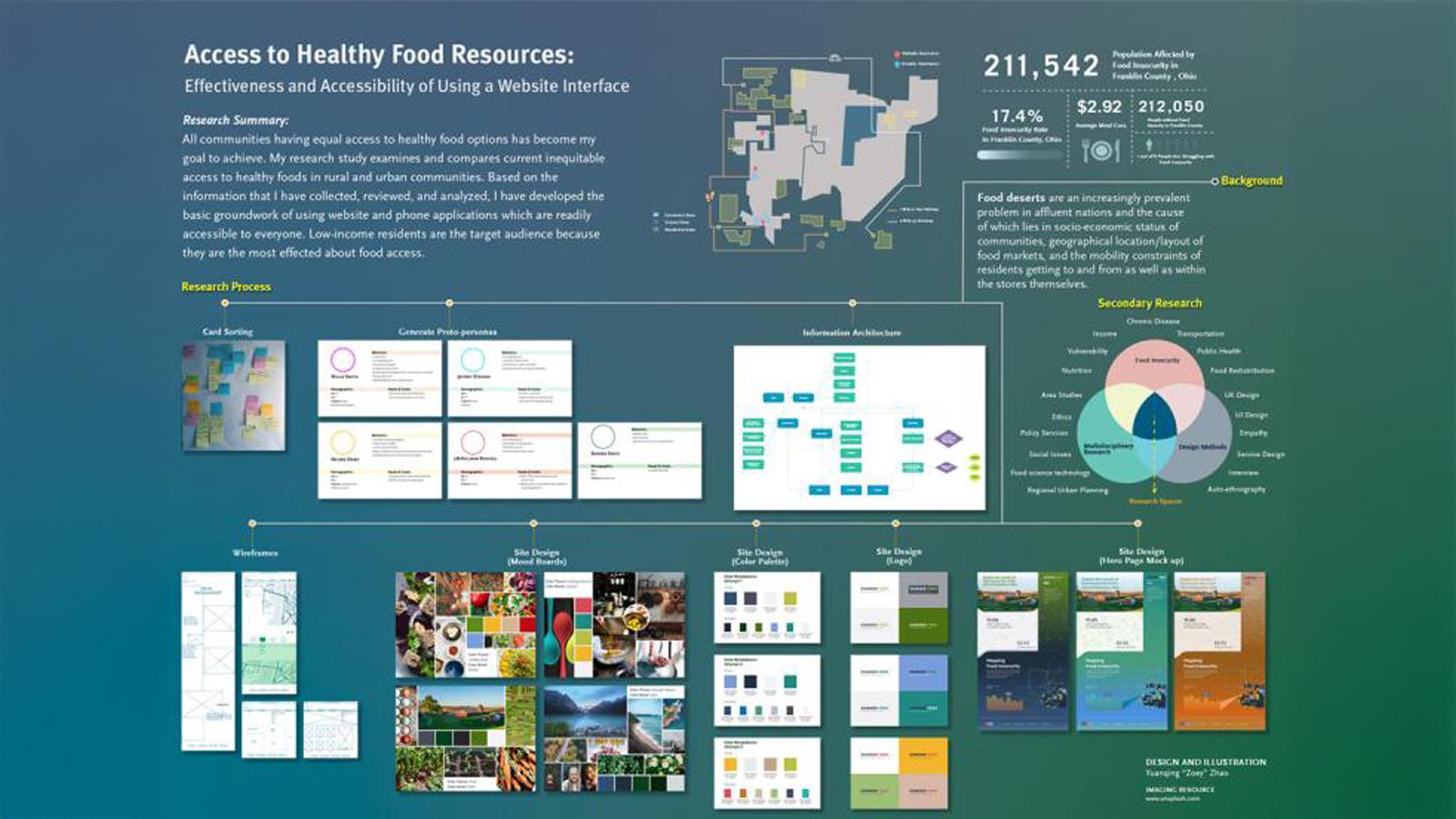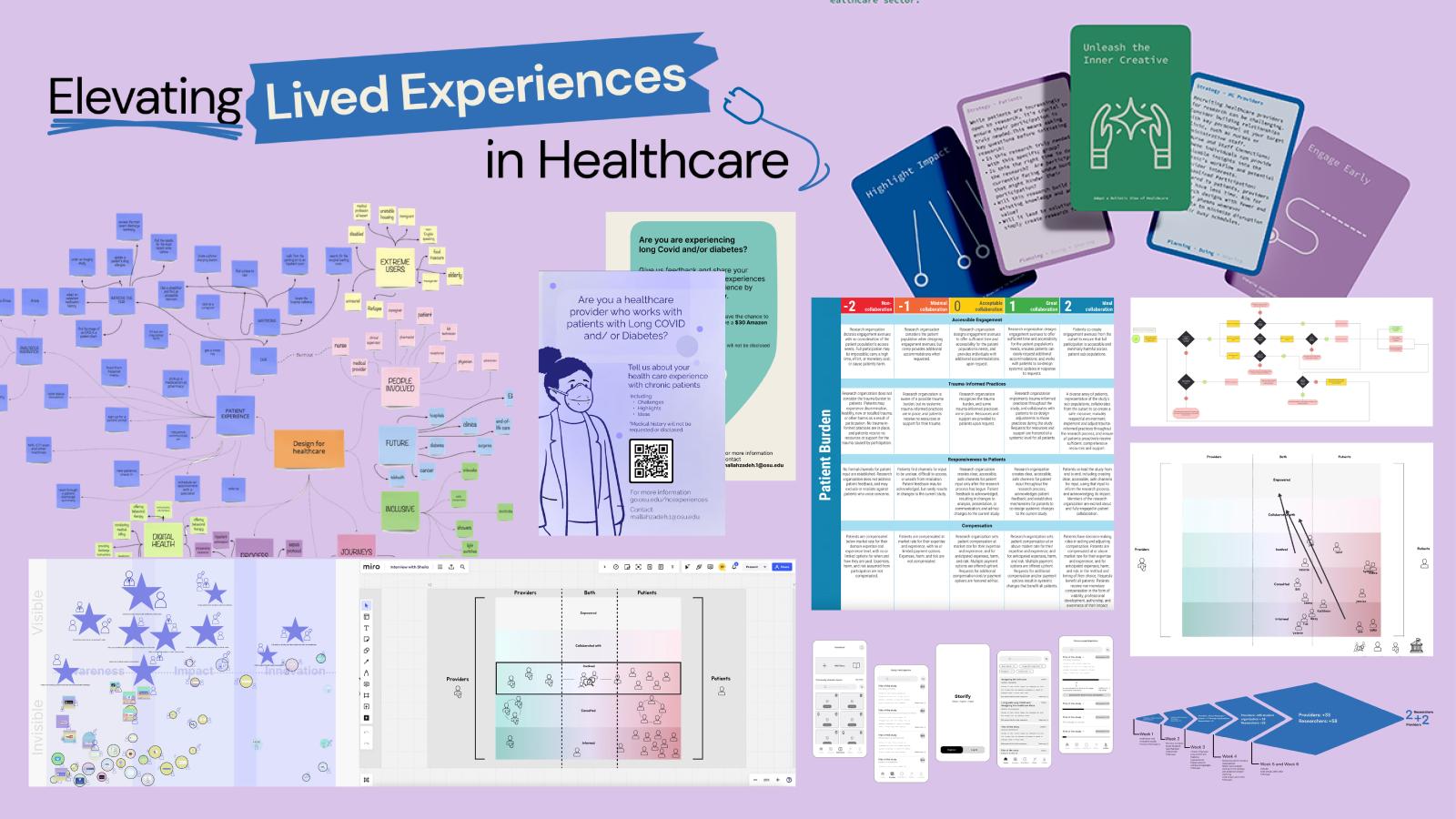
The Design Research and Development track is for persons with academic backgrounds in all fields of design. Professional practice experience is also useful, but is not required. Students in our program are encouraged to think critically about design problems and processes, to compare and test methods, and to seek discoveries through the analysis and synthesis of cross-disciplinary approaches and the application of design thinking. Because the program is intentionally multidisciplinary and process-oriented, courses in this degree may also be of interest to persons who are incorporating design thinking into the processes of other disciplines, which generates a diverse atmosphere. Research topics are encouraged in alignment with the expertise of the core faculty in order to maximize the potential for student participation in funded projects and other active theoretical or practical investigations. Areas of investigation generally fall into one of three categories: Research for design practices; Research about design practices; Design practices as research.
Students in this track are required to complete 60 credit hours of study to receive a MFA degree in Design. The program takes three years to complete, and only under exceptional circumstances is the track completed in less time. The curriculum includes a core of seminar and studio courses and independent thesis-related studies and open electives in the themes of studio/lab, history/theory, and collaborative/interdisciplinary activity. Students work closely with a three-person thesis committee to develop their thesis topics and the vehicles best used for their development.
Curriculum
The Design Research and Development (DRD) track, leading to the Master of Fine Arts (MFA) in Design, is devoted to the development of knowledge and skills possessed by successful designers, including environmental and social awareness, novel methods for human-centered and systematic analysis and visualization, and creative problem-solving. We emphasize the creation of outcomes that address and contribute to contemporary issues in a global society.
The DRD track centers on research that discovers and explores new concepts, theories and outcomes in domains that are relevant to designers. The techniques and tools applied may be those traditional to design practice, including testing performance, usability, and user satisfaction, or they may evolve from experimentation, prototyping/making and exploration of the digital realm. Engaging primary research is critical to the processes of discovery that we encourage.
Example Course Plan
Autumn Semester
DESIGN 6101 Foundation for Grad Studies, 3 credits
DESIGN 6110 Methods for Design Research, 3 credits
DESIGN 6130 Emerging Technology Studio or DESIGN 6430 Graduate Studio, 3 credits
Spring Semester
DESIGN 6102 Exploration in Graduate Design Studies, 3 credits
DESIGN 6441 Co-Design Studio, 3 credits
DESIGN 7193 with 2-mentors, Independent Study, 3 credits
Program Milestone: First Year Review (Research Orientation)
Summer
Electives, 4-6 credits
- For Autumn and Spring semesters, students on 50% Graduate Associateship appointments must be enrolled for a minimum of 8 credits. For a 25% appointment, the minimum is 4 credits.
- Students awarded a Fellowship must enroll for a minimum of 12 credits for Autumn and Spring semester, and at least 6 credits for Summer semester.
- Internship (up to 6 credits) can fulfill Studio Elective or Interdisciplinary Elective credits depending on the nature of the work experience. This is determined by the advisor.
- Elective courses maybe taken in any order, and within Design or in other departments or centers at OSU.
Autumn Semester
DESIGN 6230 Research Through Design Studio, 3 credits
DESIGN 6410 Graduate Design Seminar, 3 credits (can be taken in Year 3 if not offered)
Elective, 3 credits
Spring Semester
DESIGN 5650 Advanced Collaborative Design Studio or DESIGN 6441 Co-Design Studio, 3 credits
DESIGN 7998 Thesis Project Development, 3 credits
Elective (ARTEDUC 7725 Research Writing recommended), 3 credits
Program Milestone: Second Year Review (Research Proposal & Plan)
Summer
Elective, 4-6 credits
- For Autumn and Spring semesters, students on 50% Graduate Associateship appointments must be enrolled for a minimum of 8 credits. For a 25% appointment, the minimum is 4 credits.
- Students awarded a Fellowship must enroll for a minimum of 12 credits for Autumn and Spring semester, and at least 6 credits for Summer semester.
- Internship (up to 6 credits) can fulfill Studio Elective or Interdisciplinary Elective credits depending on the nature of the work experience. This is determined by the advisor.
- Elective courses maybe taken in any order, and within Design or in other departments or centers at OSU.
Autumn Semester
DESIGN 7998 Thesis Project Development, 3 credits
DESIGN 7999 Thesis Writing, 3 credits
Elective, 3 credits
Spring Semester
DESIGN 7998 Thesis Project Development, 3 credits
DESIGN 7999 Thesis Writing, 3 credits
Elective, 3 credits
Thesis Defense: Project Exhibition, Oral Defense
- For Autumn and Spring semesters, students on 50% Graduate Associateship appointments must be enrolled for a minimum of 8 credits. For a 25% appointment, the minimum is 4 credits.
- Students awarded a Fellowship must enroll for a minimum of 12 credits for Autumn and Spring semester, and at least 6 credits for Summer semester.
Curriculum Credit Distribution
Courses include: DESIGN 6100s, DESIGN 6200s, DESIGN 6300s, DESIGN 6400s, DESIGN 6500s, DESIGN 7998, and DESIGN 7999.
Individual Studies (DESIGN 7193) that explore a research interest in design under the guidance of design faculty.
Courses providing hands-on experiences that advance skill applied in creative research or to understand and incorporate experimental or applied practices in any discipline (i.e. ACCAD Grad Studio Courses - 5001, 5100, 5140, 5301, 6002, 7103).
Courses providing strong emphasis on history and analytical methods, as well as the philosophical, political, material, and context for works related to design, animation, or interactive media and specific research interests.
Courses providing opportunities to study and interact with another discipline beyond design.
For detailed information about forming Thesis Committees, the first year review and Thesis Committee Review, please see the Department of Design Graduate Studies Handbook.
Career Prospects
- Brand Designer/Manager
- Data/Science Visualizer
- Design Director/Manager
- Design Educator
- Design Researcher
- Design Strategist
- Graphic Designer
- Human-Computer Interaction Designer
- Industrial Designer
- Interaction Designer
- Interior Designer
- Motion Graphic Designer
- Multimedia Designer
- Product Designer
- User Experience (UX) Designer
- User Interface (UI) Designer
- User Interface (UI) Research
- User Experience (UX) Strategist
- User Experience (UX) Researcher
- Visual Communication Designer
- Web and Social Media Designer/Manager
Research Gallery: Example DRD Projects
See our Research Gallery or click the links below to view past examples of DRD projects featured at our annual Graduate Spring Exhibition, which occurs at Hopkins Hall Gallery.







